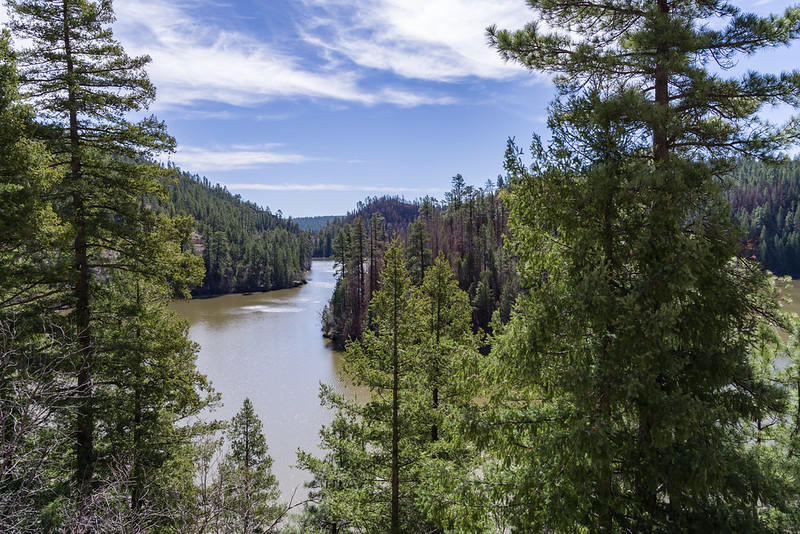By MELISSA SEVIGNY• JUL 29, 2021
Heavy rain this weekend led to flash flood warnings across much of Northern Arizona, especially in areas with recent wildfire scars. The close links between fire and flood concern water managers in the Phoenix Valley, who rely on the Salt and Verde watersheds for drinking water supplies. KNAU’s Melissa Sevigny spoke with Salt River Project spokesperson Elvy Barton about why the utility is getting involved in forest restoration.

Tell me what forest fires have to do with water supply.
When you burn the soil, you have a couple of effects. One it creates, the soil turns into cement almost, and then you have your post wildfire precipitation events, rain, typically in the monsoon season, where you have large amounts of water that drop on these soils that are now cemented. That creates a large runoff event, where you have all the ash, the debris…. When you have that type of material coming down in huge flash floods it creates very dangerous conditions… but it also creates damage to the water infrastructure… and then it also impacts the water quality because as you can imagine there’s a lot of organics and turbidity in that water. That water is actually unusable and too high a cost to treat once it’s down here in the valley.
Wildfires are a natural part of ecosystems up here in Northern Arizona, in recent years or decades have you seen that this problem is getting worse?
What we have noticed is since the 1980s we’ve actually have seen a tenfold increase in not only the size but also the severity of these wildfires occurring in the Salt and Verde watersheds.
Tell me how forest restoration activities like thinning and prescribed burns can help.
The objective for forest restoration projects is to go in and actually remove a lot of the smaller fuel, the small diameter trees, brush….When you’re removing that understory, those smaller trees, you allow fire, especially prescribed fire or natural-caused fires to come in and burn at a very low severity, and stay on the ground… and that’s what it’s naturally supposed to do. When you create a healthy forest, you’re creating a long-term condition for fire to be reintroduced and to play its natural role for decades to come.
Tell me more about the partnership you started in January to work on the thinning at the Cragin Watershed. What’s important about that watershed?
It’s a majestic watershed, as I like to call it. It is so beautiful and it’s very uniquely situated right between the Salt and Verde. One of the great things about that is that there is a pipeline that runs straight down the middle of that project, and that pipeline connects to the town of Payson’s pipeline that brings a renewable surface water supply to the town of Payson…. We have entered into a new agreement with the state of Arizona through the Department of Forestry and Fire Management, and that allows us to partner together on forest thinning projects with the U.S. Forest Service. This is a partnership that started in January of this year. We’re about to undertake a thousand-acre thinning project with this new partnership, with thinning to begin in the next few months. We’re really excited because it’s going to be the first project undertaken on that watershed.
Elvy Barton, thank you so much for speaking with me.
Thank you.
